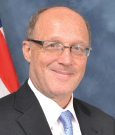The packed ballroom looked like a plenary session at any big medical research meeting. But on the dais were representatives of the Food and Drug Administration (FDA), the subject was the Agency’s proposed regulation of laboratory-developed tests, and the attendees who lined up to ask questions for nearly an hour voiced only concern and opposition.
The event at the Association of Molecular Pathology Annual Meeting in November 2014 highlighted the controversy that came to a head in July 2014, when the FDA announced it would issue long-discussed draft guidance with proposed regulations for laboratory-developed tests (see sidebar).
The Agency’s authority to regulate laboratory-developed tests comes from the Medical Device Amendments of 1976, which explicitly include in vitro diagnostic devices. But for decades, it has exercised “enforcement discretion” for laboratory-developed tests, which it defines as “in vitro diagnostic devices that are intended for clinical use and are designed, manufactured, and used within a single laboratory.” Currently, laboratories are monitored by the Centers for Medicare and Medicaid Services through the Clinical Laboratory Improvement Amendments (CLIA).
What has happened since 1976, all parties agree, is dramatic growth and change in the field of diagnostic testing. With the rise of personalized medicine, complex and widely marketed genomic tests are increasingly used to make treatment decisions in common diseases—notably cancer. The risks when such tests produce a false-negative or false-positive result can be serious.
“Failure of such tests to perform as intended can lead to patients receiving an inappropriate and potentially harmful treatment or, alternatively, not receiving treatment that has the potential to benefit them,” said Richard Schilsky, MD, Chief Medical Officer of ASCO, in a statement supporting the FDA’s action.
CLIA and Clinical Validity
The FDA document outlines a risk-based approach to regulation (see sidebar). Premarket approvals would be required for existing tests in the high-risk category, including tests for which there is already an FDA-approved equivalent. For subsequent high-risk and moderate-risk tests, premarket approvals would be phased in over 9 years. Premarket approvals would not be required for traditional or low-risk laboratory-developed tests, those used for rare diseases, or those that serve unmet needs, including tests for which there is no FDA-approved equivalent.
Those opposed to the regulations argue that laboratories for these tests are stringently regulated under CLIA and that the proposed new regulations could seriously impact patient safety and timely access to treatment.
CLIA requires lab inspections every other year by a certified inspector and on alternate years, an internal inspection, said Aaron Bossler, MD, PhD, Director of the Molecular Pathology Laboratory at the University of Iowa, who spoke at an Association of Molecular Pathology press conference. Inspectors review all reagents, instruments, and staff qualifications. In addition, each procedure must undergo proficiency testing every 6 months.
Although CLIA inspections assure that tests are done properly, they do not verify the clinical validity of the tests, says the FDA. Nor does CLIA provide for premarket review or the removal of unsafe tests from the market.
Clinical validity and how to establish it are focal points of this debate. CLIA assures that a test detects what it claims to detect, such as a genetic variant, but not the clinical validity of the test (eg, that the variant correlates with a specific disease). Representatives of the Association of Molecular Pathology argue that the correlation between gene variant and disease has been reported in the literature before they develop a test. Typically, a physician requests a test after a study of a targeted agent or biomarker is presented at a major meeting.
“We use our experience and expertise to develop high-quality laboratory procedures to detect the DNA variants that have been well-documented in peer-reviewed medical literature to correlate with disease and significantly impact patient care. We make these decisions in partnership with our clinical colleagues—the treating physicians who request this information to properly treat their patients,” said Janina Longtine, MD, Vice-Chair, Molecular Pathology and Genetics, at Mount Sinai Medical Center in New York, speaking after the press conference.
Many laboratory-developed tests do follow this path, agreed Alberto Gutierrez, PhD, Director of the FDA’s Office of In Vitro Diagnostics and Radiological Health, who spoke at the Association of Molecular Pathology meeting. But others do not, he added.
“There are many tests currently launched that do not have any published data to support them,” he wrote in an e-mail. “Furthermore, given the number of claims in the literature that have not been reproduced, use of published literature is not always an assurance of clinical validity.”
CLIA also does not evaluate the clinical validity of the test, ie, whether or not patient outcomes are improved by using the test. However, the guidance document states, “the FDA intends to work with the laboratory community, the health-care professional community, and other stakeholders to identify those laboratory-developed tests for which the clinical validity of the analyte/marker has already been established in the literature.”
Concerns Over Patient Access and Reporting Requirements
Another major concern of members of the Association of Molecular Pathology is patient access. When the results of studies with targeted agents are published, laboratories can respond quickly, developing tests for a new biomarker with little delay, said Jan Nowak, MD, PhD, Medical Director of the Molecular Diagnostics Laboratory at the NorthShore University Hospital System in Chicago.
“The traditional process works and serves a very important service,” he said in an interview. “And it occurs much faster than anything that goes through the FDA.” Tests for which there is no FDA equivalent would not have to go through the premarket approval process but would have to be reported to the FDA.
Laboratory professionals also worry about the extra burden of the new reporting requirements. Reporting existing tests would involve tens of thousands of records, said the Association of Molecular Pathology President Elaine Lyon, PhD, of ARUP Laboratories and the University of Utah’s School of Medicine, speaking at the press conference. Laboratories already have websites that list all their tests, she said, and there are registries at the National Institutes of Health and CLIA. “I would ask the FDA to learn from existing sources before putting additional burden on labs.”
Professionals, Not Manufacturers
Another recurring theme at the meeting was the difference between traditional and commercial laboratories. Traditional diagnostic laboratories are usually affiliated with a hospital or academic medical center and work closely with physicians. But with the advent of genomic testing, a different business model has emerged. Commercial companies have become involved, often with large marketing budgets.
“Clearly, what is happening now is that there are many tests being developed by companies that look more like test manufacturers than traditional laboratory-developed test laboratories,” said the FDA’s Dr. Gutierrez.
On this point, representatives of the Association of Molecular Pathology agree. “Some entities have bypassed the FDA process by establishing a laboratory and getting a CLIA license,” said Dr. Nowak. “They are proprietary … but that’s not the traditional process.”
He and others would like the FDA to distinguish between large commercial companies and traditional laboratories. “They are lumping too many things together, trying to deal with several issues with one guidance,” Dr. Nowak said.
He and others emphasized that diagnostic testing is a process, not a manufactured product, and they prefer the term laboratory-developed procedure rather than laboratory-developed test. “This is the practice of medicine,” said Dr. Longtine. “We are not manufacturers.” ■
Disclosure: Drs. Schilsky, Gutierrez, Nowak, Lyon, and Longtine reported no potential conflicts of interest.






